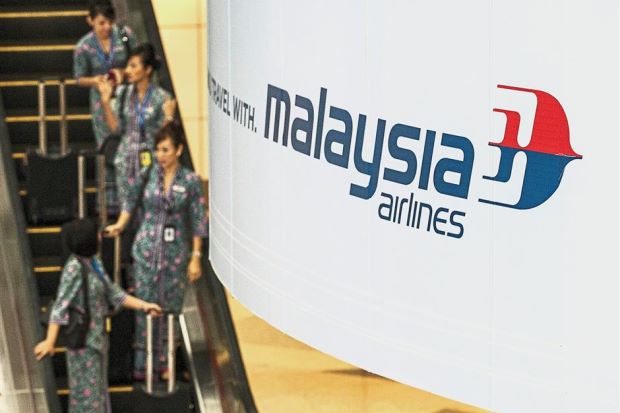
Golden service: Our cabin crew are the best, and truly deserve the many accolades that have come their way. — EPA
SURELY, we must have heard from frequent flyers that Malaysia Airlines Bhd has lost its lustre and vigour. Our planes look derelict compared to those of Cathay Pacific, Singapore Airlines and Emirates Airlines.
The complaints run the gamut, from food choice to movie selection. The management of Malaysia Airlines must have received this feedback, surely.
Yet, like many Malaysians, I remain loyal to MH. I believe in its Malaysian Hospitality. I have travelled to many countries, got onboard a variety of airlines, and I can vouch that our cabin crew are the best, and truly deserve the many accolades that have come their way.
However, all that can’t gloss over the national carrier’s need to be competitive again. Its troubles haven’t been erased from memory, but faith in the brand is slowly but surely returning.
The airline’s losses in 2014, in the wake of MH370’s disappearance, and the shooting down of MH17, will continue to haunt it. Those massive losses of human life have hurt both the airline and country’s image in a horrible and devastating way.
It didn’t help that the old MAS was declared “technically bankrupt” in 2015. But the dark clouds have blown over. The management has done a remarkable job in turning things around, earning media coverage which said, “so much growth that it doesn’t have enough aircraft to match the demand.”
In June, MAS announced it was buying six second-hand Airbus A330s, and last week, Prime Minister Datuk Seri Najib Tun Razak revealed that the country intends to make Malaysia Airlines buy more Boeing planes, saying: “We are committed to 25 planes of 737 MAX 10, eight 787 Dreamliners and there is a strong probability, not possibility, that we will add 24 or 25 more 737 MAX 10 in the near future.”
So within five years, with the additional purchases, the deal will be worth in excess of US$10bil (RM41.87bil), it was reported.
The 737 MAX 10 will be the airline’s most profitable single-aisle airplane, offering the lowest seat costs ever, while the 787 Dreamliner is a long-haul, mid-size wide-body, twin-engine jet airliner.
The Prime Minister also witnessed the signing of a Memorandum Of Understanding between Malaysia Airlines and The Boeing Company for aircraft purchases and the setting up of a Maintenance, Repair and Overhaul facility in Sepang, worth US$4.86bil (RM20.35bil).
The discussion with Donald Trump was the highlight of Najib’s 911 working visit to the US, where he was invited by the 45th US President.
Najib said the Government would also try to persuade low-cost carrier, AirAsia Bhd, to purchase US-made General Electric engines.
Reading purely into the political spin, the PM is seen spending lavishly, which the country can ill afford at the moment, but Malaysia Airlines needs those new planes badly, as its chief executive officer Peter Bellew attested, “even after buying six used A330s, it seems the airline is still short of empty seats for its aggressive regional expansion plans.”
A recent report states “this purchase of 40-plus long-haul aircraft is a huge deal for an airline that currently has just 21 long-haul aircraft in active rotation (15 Airbus A330s, six Airbus A380s – which it recently considered selling).”
According to AirFleets, “Malaysia has an additional 24 wide-body aircraft currently stored, half of which are (understandably) Malaysia’s retired 777 fleet, which was the aircraft model involved in both the 2014 tragedies. Three others are Boeing 747-400s, which are known for their fuel inefficiency, compared to more modern aircraft.”
Malaysia Airlines also needs to regain premium destinations it lost. Malaysians can no longer fly MH to New York, Los Angeles or San Francisco. It’s disappointing that we have to hop on another airline to get to these prime locations.
The Paris and Amsterdam routes ceased operations early last year, and before that, in 2015, Frankfurt and Istanbul also lost their service, leaving London as the airline’s sole European destination.
This certainly doesn’t bode well for an international carrier since these are golden ticket routes – popular and profitable.
Incredibly, at one time, the old MAS flew direct into Zimbabwe and Argentina even, when decisions were made by leaders without considering commercial concerns.
Malaysia Airlines now has to consign its past to the history books and move on to compete in the highly-competitive aviation business.
The Government has wisely left the job of running the airline to a professional. Who cares if he’s a foreigner? As long as he does it right.
The management has whittled down its staff size because the airline was simply “bloated” at one point. It has stopped the practice of having over-priced food items for passengers.
Malaysia Airlines must, however, remember that it is a premium brand. It is not a low-cost carrier and passengers expect to get what they pay for.
No compromise can exist in the food quality, entertainment offerings and luxury of the business class, where airlines rake in the bucks. Now, even Wi-Fi is a prerequisite.
Two “new” movies in a movies package doesn’t cut the mustard, especially when other airlines offer hundreds of selections from multiple genres.
Frequent travellers also want the menu to be regularly updated, even if they are able to pre-order their food before boarding (for high-paying passengers). Certain things simply cannot be compromised for long hauls, though.
Our national carrier could do well to remember that we are not mere passengers, but customers, too. As the client, it’s fair game to expect some pampering.
Najib has made the right call to buy more planes for Malaysia Airlines. It is long overdue, more so because planes are not delivered to the buyer the day after purchase.
My choice is clear – a Malaysian airline comes first – whether it’s Malaysia Airlines or AirAsia – because I believe in supporting a Malaysian brand. Give me the satay and sincere smiles, any time.





